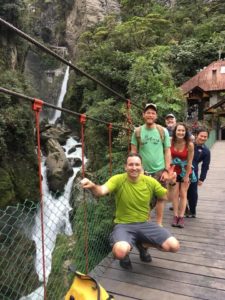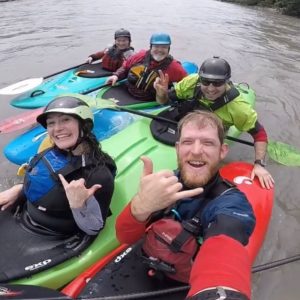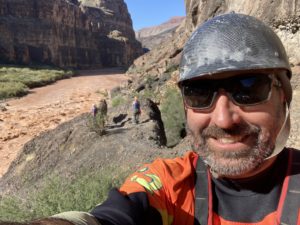The snow is falling in Oregon and we had just gotten back from a day on the mountain, skiing, the furthest thing from reality was sunny weather. However, it was time to switch gears and pack for what was sure to be one the most incredible two weeks of whitewater I could have hoped for. After wrapping my brain around the idea of warm weather, and digging out my boardshorts and sun shirts from the bag they had been stashed in for the winter season, the next step was to bug proof our clothing and equipment. We had been warned by our local contacts that the tabanos (biting deer flies) were out in force on the Rio Grande-Colorado, and the last thing we wanted was to be eaten alive while trying to row through rapids. So with all our clothing sprayed with Permethrin (a natural insecticide) and drying, we headed for bed with eager anticipation for what was to come. Next stop Santiago, Chile.
Our flights thankfully went smoothly, yet we were still on the west side of the Andes, so it was off to the bus station to venture east into Argentina with our gear in tow. After lugging an inflatable SUP, drybags, and backpacks through more than enough airports, bus stations, and the occasional coffee shop to recaffeinate, we had finally arrived in San Rafael, Argentina, the starting point for our two week wilderness adventure.Iip
After connecting with the rest of the crew at our hotel, checking with our local guides Luciano (Lucho) and Ariel to load our gear, all that was left was the pre-trip meeting and the van ride to the put-in. However, it was the day of the World Cup final between France and Argentina, and given that we were in Argentina, we decided that the meeting could wait a few hours. So we all headed out to watch the game at a nearby bar.
Surrounded by locals all there to bet their heart and soul on the game, we settled in at a table as play began. By halftime, Argentina was up two to zero, and everyone was feeling pretty confident about the outcome. The locals we were watching with were all enjoying the game, laughing, and appreciating each other’s company. The feeling and energy was contagious, and we fell into casual conversation, bouncing between the game and our upcoming adventure. Out of nowhere, France scored two back to back in the second half, the bar fell silent with an intense concern for what might come next.
Tie by then end of the second half, same results after double overtime, the shootout comes next. The tension in the bar was electric, people had stopped talking, eating, drinking, I think some might have even stopped breathing. All focus was directed at the nearest tv or projector, you could feel the anxiety building in each and every person there as France’s Mbape took his place in front of Argentina’s goal. He takes his shot and scores, as a wave of worry washes over fans across the country. Messi is next to shoot. He places the ball, takes his shot, and scores! Relief is the next of many emotions to flood through the bar as they tie the shootout. The next player lines up and shoots, and Argentina saves it! The opportunity is there to pull ahead as Argentina takes their next shot, and scores! As France lines up again, they force another save by the Argentine goalie! Back and forth they go for another round and it’s back to Argentina for the next shot, if they make this one they win! Goooooaaaaaallll, Argentina!
Next thing we know the bar is on its feet, and the streets are flooding with flags, trucks, bicycles, with people waving jerseys above their heads. A passionate display of celebration began nationwide the moment the ball crossed the goal line. People were climbing street signs, blowing horns, honking, yelling, and some even crying out of pure joy for the triumph of Argentina. As the streets filled with what could only be described as the most enthusiastic parade I have ever witnessed, we joined the crowd and proceeded to the main square where everyone was congregating to enjoy this victory as an entire country. As the festivities continued well into the next morning it became time for us to think towards the river. We packed our drybags, discussed the plan for the next morning, and prepared ourselves for our morning departure by van to the put-in.
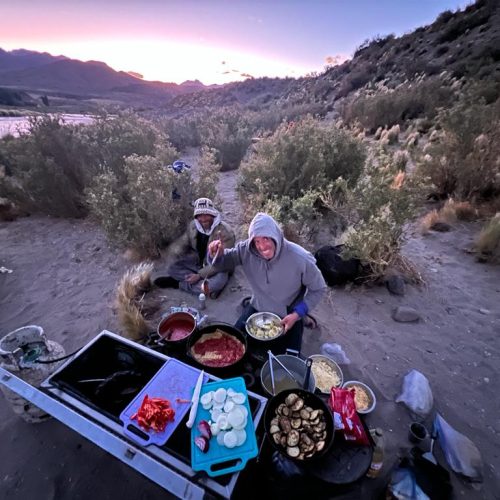
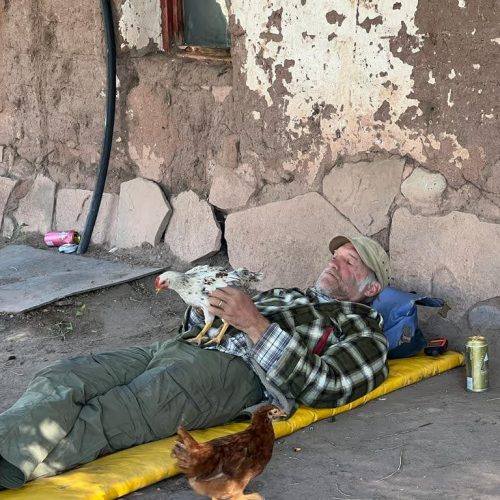
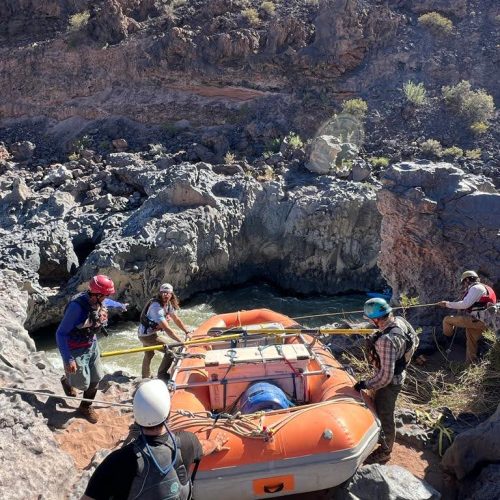
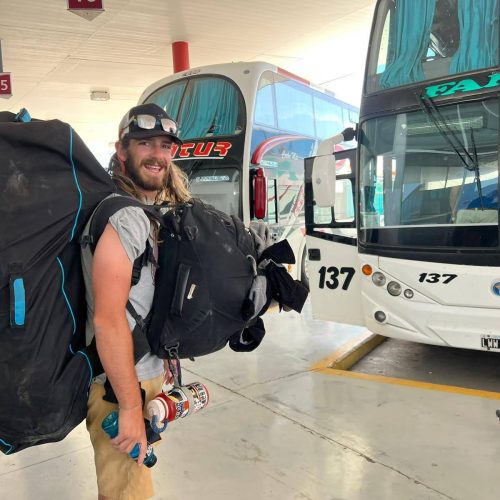


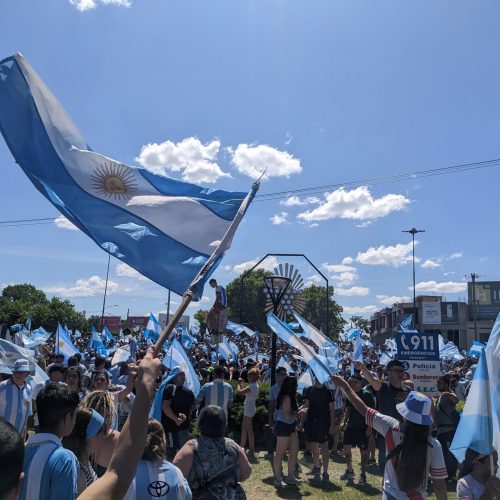

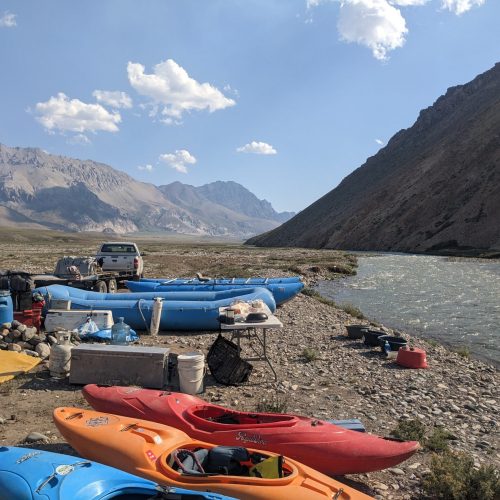
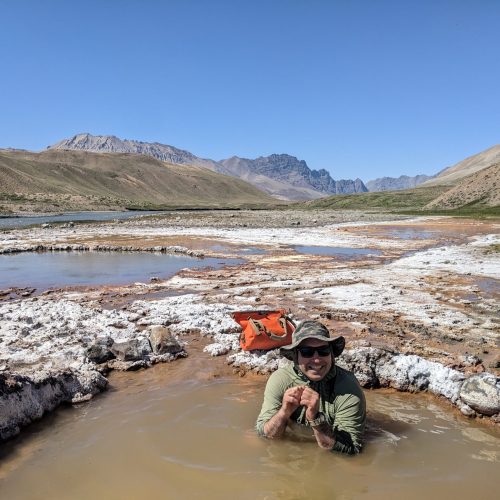
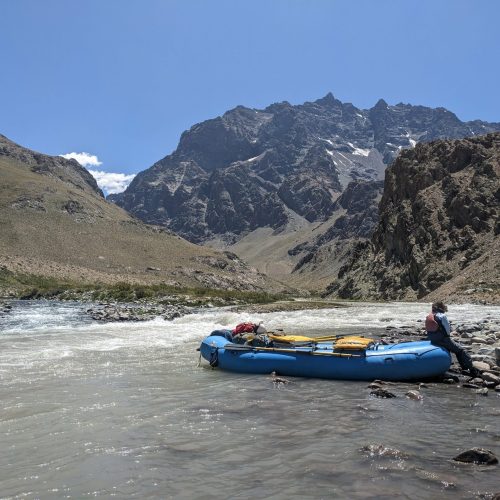

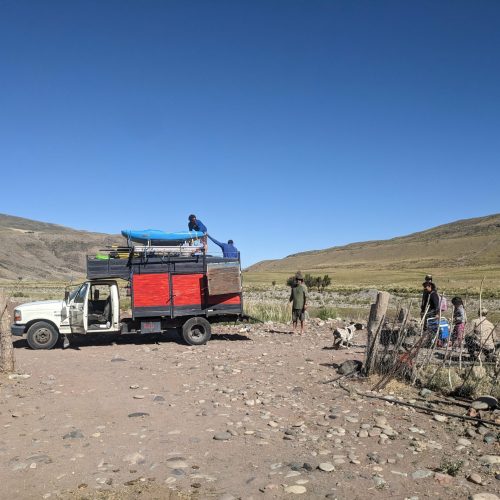
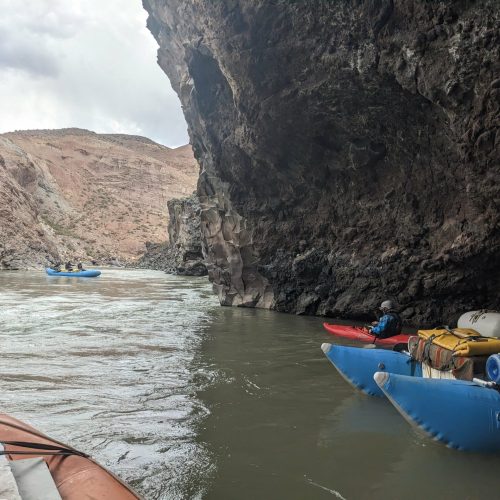
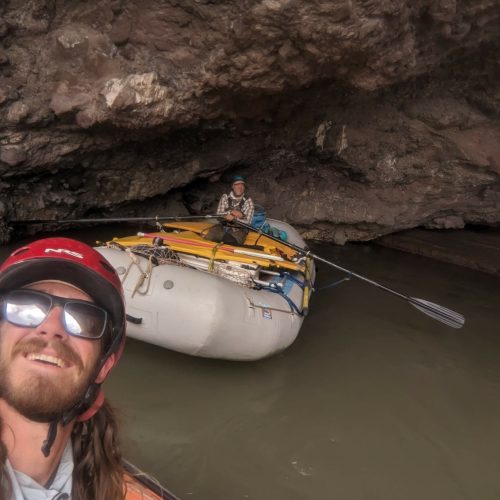

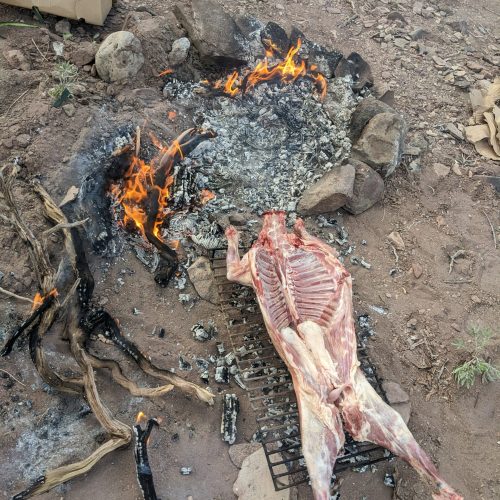
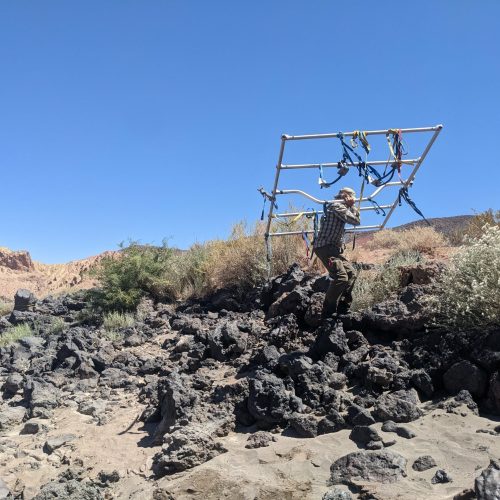
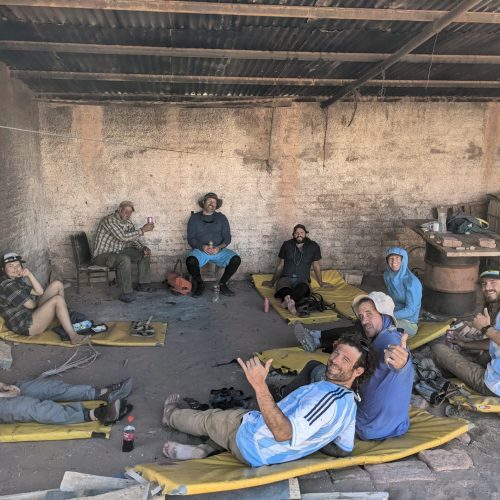
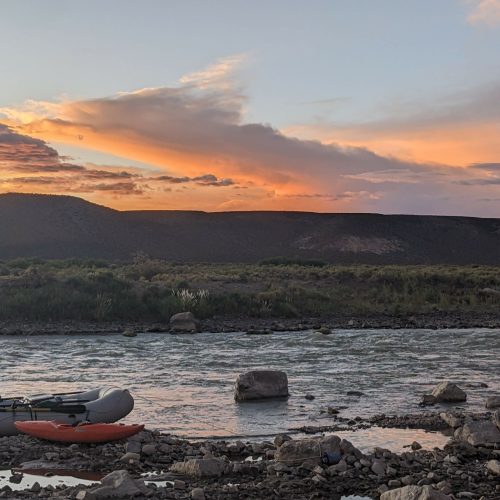

Nine o’clock came early, as we piled the last of our gear into the van, picked up a few snacks for the road, and clambered in for our five hour drive to the put-in. Most of our equipment had departed the afternoon before, and would be meeting us there at the river. The scenery on our journey was incredible. Stopping once or twice for food and bathroom breaks, we had arrived at a ski resort Las Leñas, the last of civilization we would be seeing for a bit. From there we still had a 9,000 vertical foot pass to drive over to reach our final destination, Valle Hermosa, where we were to embark on our on-water adventure. As the road faded from pavement, to gravel, to what could barely be considered a road, we reached the top of the pass looking out onto the river valley we were about to explore. I had never seen anything like it. Feeling as if we were standing in a NatGeo cover photo, we gazed out over beautiful high alpine wildflowers spotting the mountainsides, steep jagged peaks reaching up towards the clouds, glaciers suspended in the shadowy couloirs, and far below, our multicolored rafts sitting on the banks of the braided headwaters of the Rio Grande.
Once we finally arrived at the river’s edge, the next task was to rig and load our three 18 foot gear boats and 16 foot cataraft with our supplies for the coming weeks. Rigging went smoothly as our guide Lucho prepared dinner. Sunset came and touched the mountain peaks with a spectacular show of color, followed by an even more impressive display of stars complete with Orion, the Southern Cross, and a great deal of other constellations I couldn’t name. Little did we know that nature was planning on putting on an equally incredible show for us almost every night.
Morning came, and Ariel and Lucho sent us out to explore the valley a bit before we put on, since the day was scheduled to be relatively short on the water. With vague directions and whispers of a hot spring guiding us, we waded across three icy rivers in search of geothermal activity. After some time wandering through the pastures in the valley, with the resident horses keeping a close eye on us, we found the hotspring and climbed in for a morning soak. After some time of chatting, enjoying the view, and most of all appreciating the hot water we were sitting in, it was time to venture back to camp. From there we loaded the last of the supplies, piled in our respective boats, and shoved off leaving the magical Valle Hermosa behind.
All was well through our first few rapids, despite the narrow and shallow headwaters we were squeaking our huge 18 foot rafts down. We would soon enter El Cajon de los Oscuros, one of the deepest canyons I myself have rafted through. Our guide Lucho told us that in the native culture, it is said the Apu, or gods of the mountains, lived on the peaks of the mountains rimming the canyon.
As we descended, the waters from the mountains joined us on our journey downstream. Tributaries poured in and added to the churning waters that we floated on, making rocks fewer but rapids far more substantial. El Cajon de los Oscuros began as a technical, rocky, and sharp descent from the high mountains where we began, but the waters were not the only thing impacting our experience. The many layers of geology we traveled through altered the flow of water time and time again, from sandstones to volcanic basalt, to fossils and rolling river rock, we would travel through every layer in the rich history of the Argentine Andes.
After exiting our first canyon section, the winds began to howl. With many miles ahead of us, and many windblown miles behind, weary from the gale we stopped at a small farmhouse near the river to rest and have lunch. It was Christmas day, and the family living here welcomed us to their home. They brought us fresh bread, hot water, and provided space in the shade where we could hide from the abusive gusts blowing up into the mountains where we had begun. With further distance between our current location and the campsite that night, and the wind continuing to grow stronger, we opted to change plans slightly.
Our next camp was intended to be just above our first major obstacle, a portage around volcanic lava flows (Pasarella), where the river routed underground and through slots too narrow for our rafts. Graciously, our hosts at the farmhouse offered to assist in our portage mission, so we derigged in the evening, and set to drive the portage the next morning, saving our energy instead of sacrificing it in the face of the wind.
A long hot drive consumed a large portion of the following day, with a truck constantly overheating and a stop in town to resupply, we arrived at the next camp mid afternoon. Until this point the tabanos (biting flies) we had been warned about were all but non-existent. This location however, was a different story. Unless pants, long sleeves, socks, and a heavy layer of bug-proofing was worn, you were lunch. Even those that were taking all the necessary precautions were being eaten alive as we rerigged our equipment in the afternoon sun. After the essentials had been set up we dove headlong into tents in search of a brief moment of peace from the carnivorous clouds swarming our camp. Upon finding sanctuary within the mesh walls of our tents, siestas came for many of the group, and by the time we had awoken the flies had graciously subsided as the sun sat low in the sky. We managed to finish our rigging and enjoy dinner without having to constantly defend ourselves.
Thankfully, the flies slept the next morning so we vacated our campsite relatively unscathed. After a short float we began to enter our second major canyon of the trip. Personally, this is where my favorite section began. We dove into incredible basalt canyon walls, where you could see the change between the sandstone floor of an ancient lake, and the more recent lava flows cutting through the desert and river valley. We floated past cliffsides, into eddies hidden in caves along the riverside, watched the condors circle high above or sit upon the canyon rim searching for their next meal, and did our best to avoid the fly infested beaches along the way.
This volcanic canyon also brought with it incredible whitewater. By this time the river’s flow had more than doubled in volume, making the rocks far fewer and the waves far greater, bringing us to the biggest runnable rapid of our trip, Magma. After investigating our line from shore and holding a quick safety discussion which included choosing the order of our runs, our kayakers descended Magma. The kayaks launched off of what appeared like a waterfall, and blasted through the holes and waves safely into the still water below. With our cleanup crew in place, it was the rafters’ turns next. Floating up to the right side of the drop, catching a crosswave that pushed into the main tongue of the rapid, the next step was to lift the oars to avoid the right shore, and blast down into the lower half of the rapid. Celebrations followed a successful run for all, and we continued downriver to our next camp. Dinner that evening was an Argentine special, “Chivo asado”, an entire goat roasted on an open fire.
Despite completing the largest runnable rapid of the trip, our challenges were far from completed. After exiting the canyon briefly, we encountered our next major portage. Our initial intent was to remove personal gear, and float our boats down through the class V rapids we were intent on avoiding. However, the river level had dropped enough that floating empty boats through this basalt corridor almost guaranteed major damage to the equipment. So it was time to think of a new plan. The rest of the afternoon was spent carrying rafts, frames, coolers, and all of our other gear up from the river to a small truck. Without the truck this would have been a difficult endeavor, but even with the truck it was not an easy mission. We moved our equipment downriver to an abandoned salt mine, investigated our options to return to the river the next morning, and settled in for the evening at an abandoned salt mine.
Morning came and after breakfast, we moved ourselves back towards the riverside. After some creative thinking we established a plan of attack. After anchors had been set, knots had been tied, and boats moved to the canyon’s edge, we began to belay the rafts one by one, over the cliff’s edge to the waters below. Once at the river, a raft captain would climb down the cliffside and into the raft, releasing it from the rope, and rowing around to the nearest beach where the rest of our lighter equipment was to be reloaded.
After a whole morning of lifting, carrying, belaying, packing, and repacking, we had made it back to the water. Only a few kilometers to go before our next camp, thank goodness. As we said goodbye to the last of the volcanic canyons, the cliffs opened into large sandstone expanses, painted skies at sunset, and beaches where fossils littered the ground. Hours were spent at camp wandering the shoreline, scouring the ground for remnants of the river’s rich ecological history. Many were found, mostly small fossil shells, some even whole, and others so large you’d be hard pressed moving them from their resting place.
In contrast to the incredible history left behind by the shells, the current life along the river, mainly consisting of birdlife, offered an incredible viewing experience. While still high in the mountains we saw ibis, andean gulls, and hosts of geese and ducks we had never seen before outside of picture books. Not to mention the incredible size of the condors we had seen circling above. Yet one of the most unique creatures we had witnessed was flamingos. Never before had I imagined seeing flamingos in the high mountains of the Andes, let alone encountering one standing along the side of the river only meters away from me. As we descended into the open lands of the lower river, the ibis remained, as well as many of the ducks and geese. As we approached a band of clay cliffs next to the river, another incredible species came into view en masse. Baranqueros, a species of cliff dwelling parrot, came squawking and diving towards our boats out of curiosity. I am sure brightly colored rafts were quite the sight for these birds, just as seeing black and green swarms of parrots was for us as we floated by.
New Year’s Eve was our final night before returning to civilization. With a large fire, malbec from Mendoza, and yet another incredible meal from our guide Lucho, we reminisced on the past two weeks. We laughed about misadventures, reflected on the incredible hikes from camp, and the beauty of all of the many different biomes we had traveled through. Feelings of gratitude overwhelmed the group as we thought back on all of the experiences we had shared and the team we had become. From a World Cup victory in one of the most passionate countries I have ever visited, to the beauty of the high mountains of the Andes, and the unparalleled diversity of birds, plants, and fossils we had discovered. Even the setbacks and brutal portage struggle fest we had overcome as a group were pleasant memories. On to new adventures as we parted ways in the new year, taking with us this special experience – Argentina would always hold a place in our hearts and minds.


